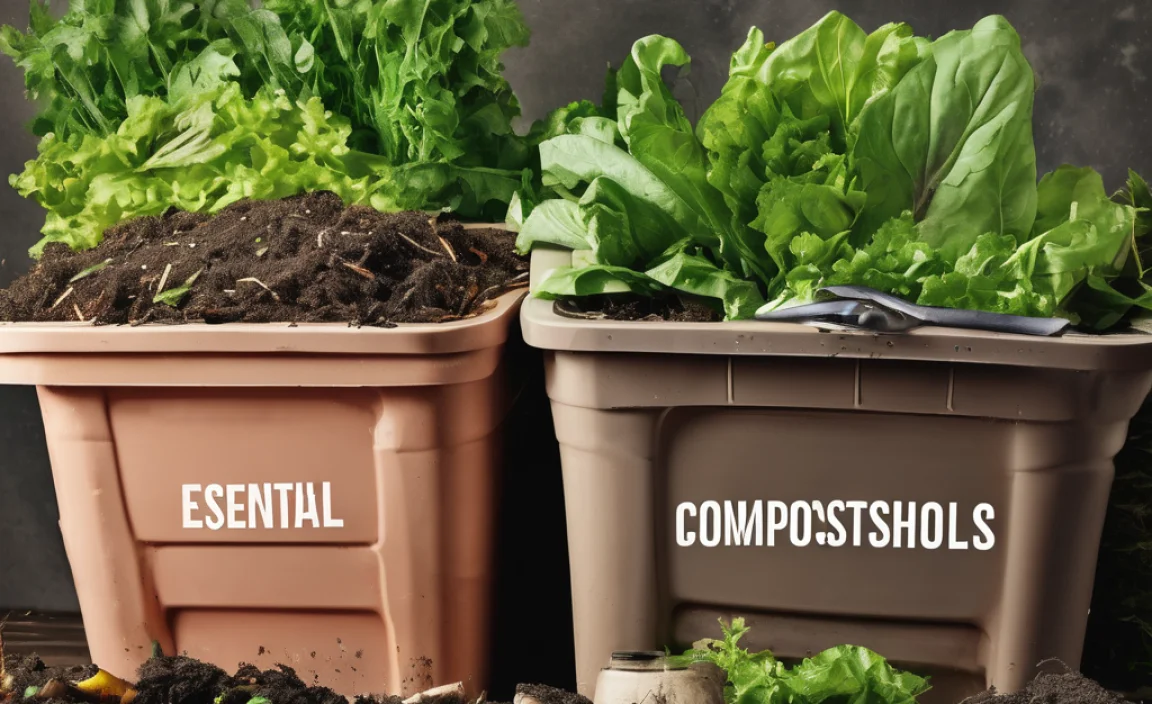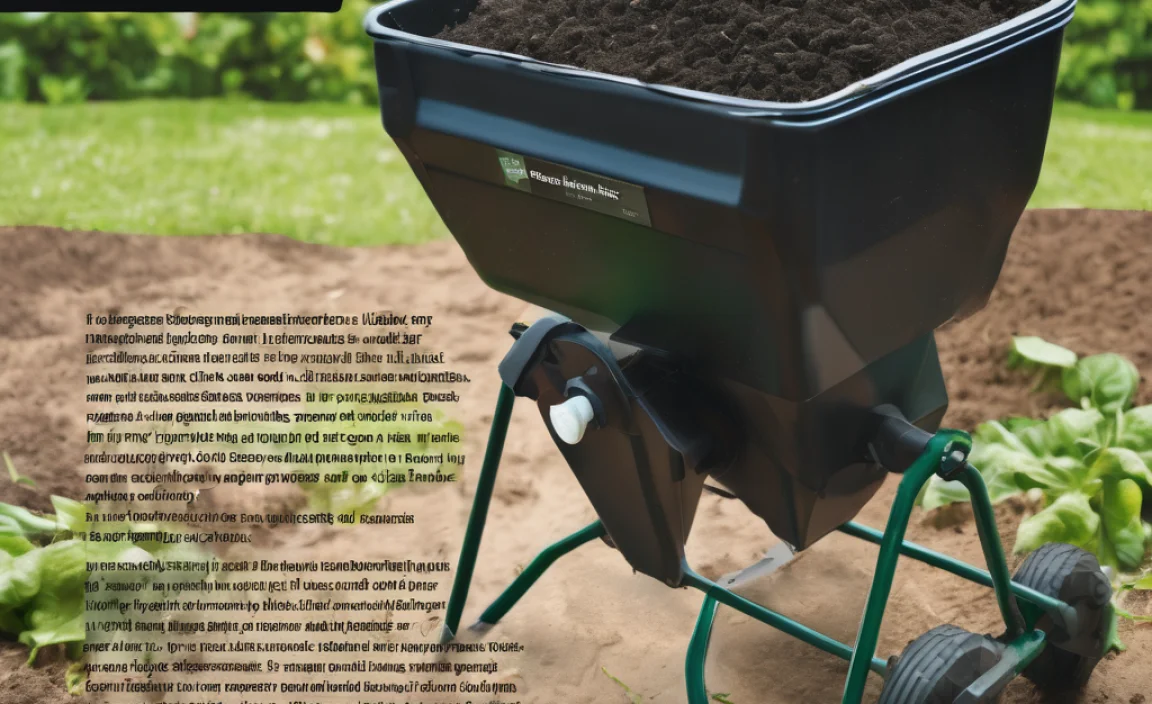“`html
Can You Compost Corn Cobs? Your Essential Guide to Turning Waste into Garden Gold
Got leftover corn cobs after a summer barbecue or a big batch of corn on the cob? You might be wondering if those woody remnants can make their way into your compost bin. Many people toss them, but there’s good news! You absolutely can compost corn cobs. They’re a fantastic addition to your compost pile, but knowing how to prep them makes a big difference. Let’s break down how to turn those cobs into nutrient-rich compost for your garden. We’ll go step-by-step, making it super simple for beginners.
Why Compost Corn Cobs? The Big Picture
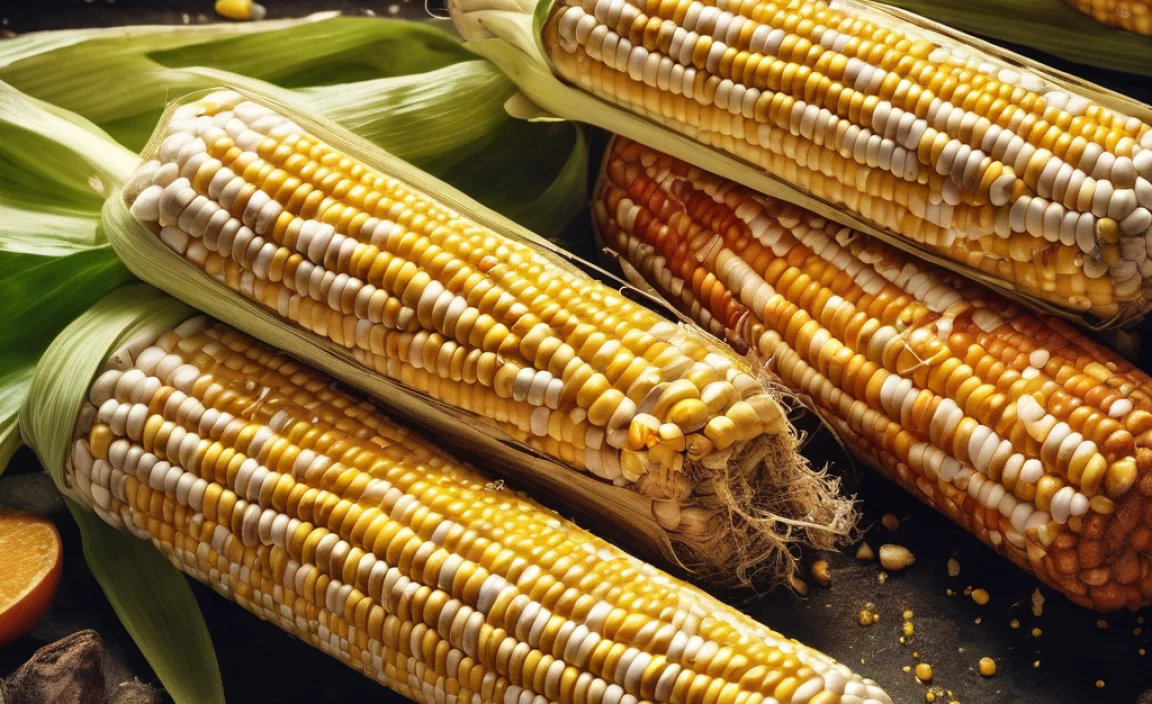
Composting is like nature’s way of recycling. Instead of throwing organic waste into the landfill, we give it a new life as a superpower boost for our gardens. Corn cobs are a prime example of something you can easily divert from the trash. They’re mostly cellulose, a tough plant material that breaks down over time, adding valuable organic matter to your soil. This helps improve soil structure, retain moisture, and provide food for beneficial microorganisms. Plus, it saves you money on store-bought fertilizers! It’s a win-win for your garden and the planet.
What Are Corn Cobs Made Of?
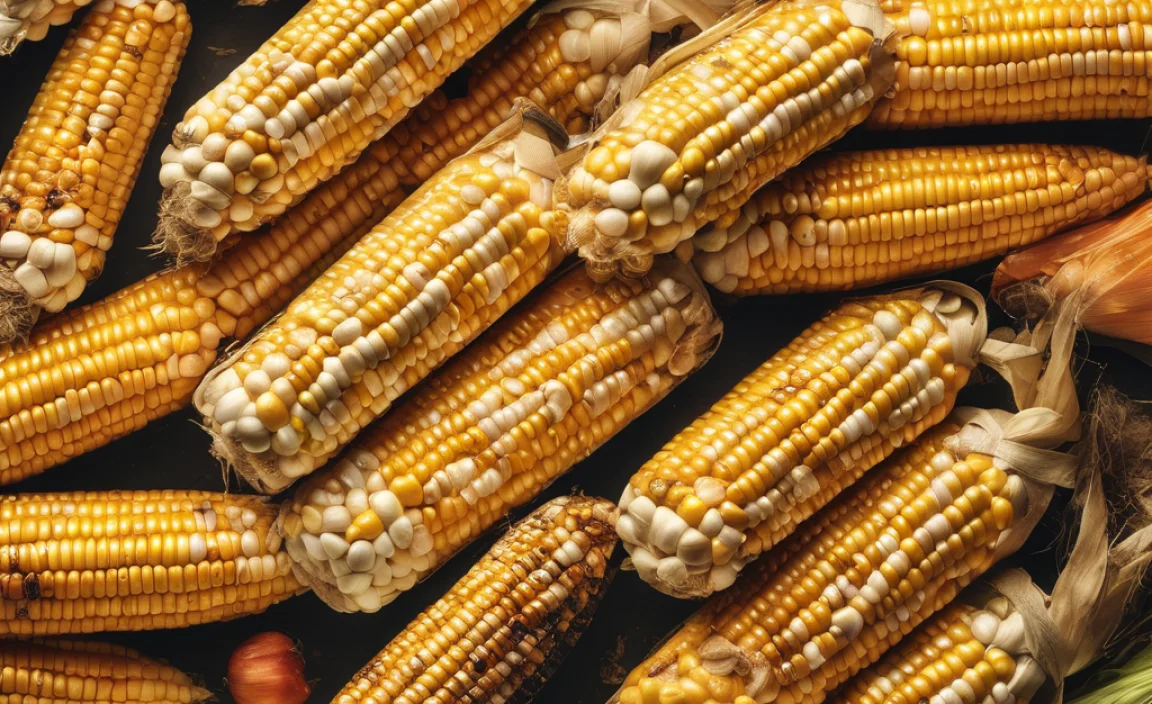
Understanding what you’re composting helps you know how it will behave in the bin. Corn cobs are primarily composed of:
- Cellulose: This is the main structural component of plant cell walls. It’s tough and takes a bit longer to break down than softer materials.
- Lignin: Another structural component, lignin is even tougher than cellulose and contributes to the woody texture of the cob. It also requires a longer decomposition time.
- Hemicellulose: Similar to cellulose but easier to break down.
- Water: Like any plant material, cobs contain a significant amount of water when fresh.
Because of their tough, woody nature, corn cobs are considered “browns” in the composting world. Browns are carbon-rich materials that provide structure to the compost pile and allow for airflow. While they are browns, their high cellulose and lignin content means they’ll decompose slower than things like grass clippings or food scraps.
Are There Any Corn Cob Mistakes to Avoid?
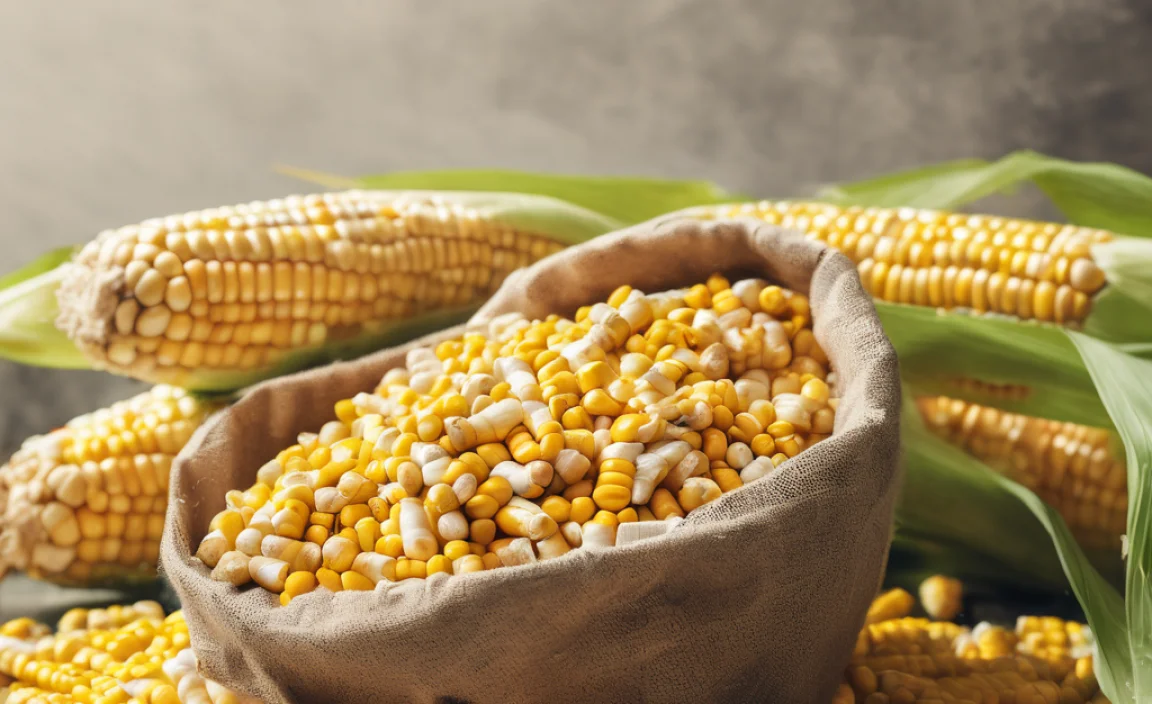
While composting corn cobs is generally straightforward, a few common pitfalls can slow things down or cause issues. The biggest mistake is usually adding whole, unbroken cobs. They’re large and dense, and because they’re tough, they’ll take a very, very long time to break down if you just toss them in as is. This can lead to a pile that’s not heating up properly or is full of large, undecomposed pieces. Another common error is adding too many cobs at once without balancing them with other compostable materials. This can tip your compost’s carbon-to-nitrogen ratio, making it too “brown” and dry, hindering decomposition.
How to Prepare Corn Cobs for Composting (The Right Way!)
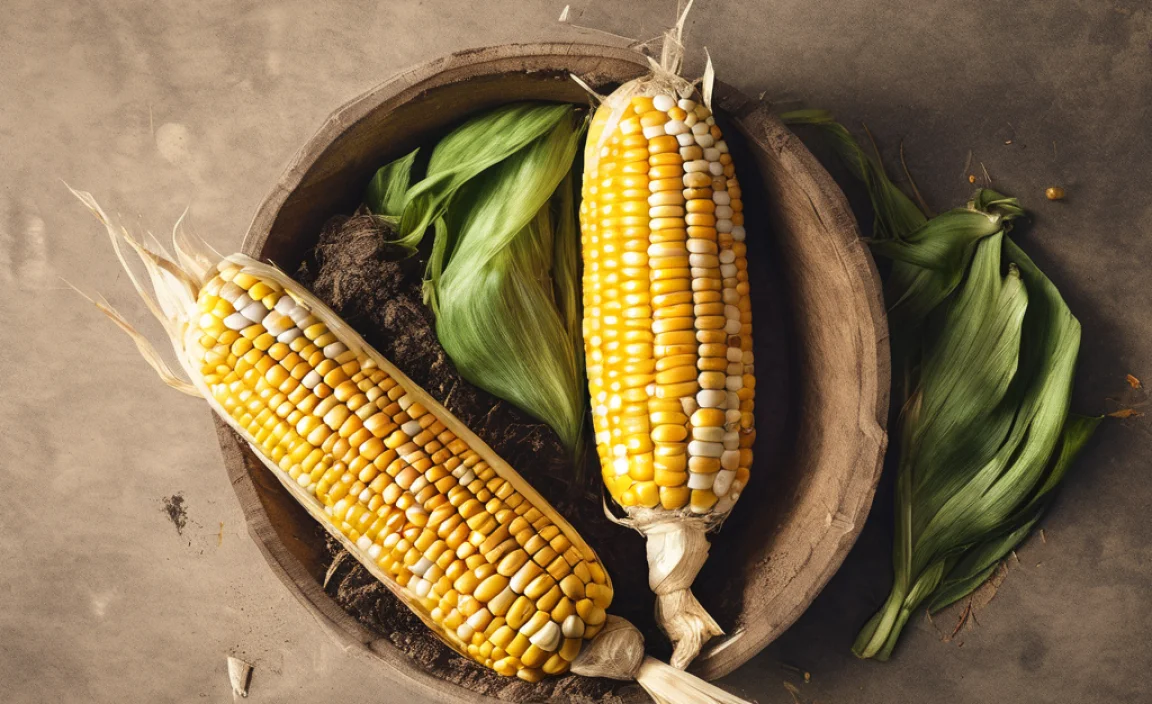
This is the most important part for successful corn cob composting. Preparation is key to speeding up the decomposition process. Here’s what you need to do:
Step 1: Break Them Down
This is crucial! Whole corn cobs are like mini logs in your compost bin. They have a large surface area that needs to be exposed to microbes. You have a few options:
- Chopping: The most common method is to chop the cobs into smaller pieces. Aim for pieces that are 2-3 inches long, or even smaller if possible. You can use a sturdy knife, an axe (with extreme caution!), or a heavy-duty garden lopper.
- Breaking: You can also just break them by hand if they are dry enough. This might not get them as small as chopping, but any breakage helps.
- Shredding: If you have a chipper/shredder, this is the most efficient way to break down large quantities of corn cobs into tiny pieces.
Think of it like this: the more surface area you expose, the faster the microbes can get to work munching away.
Step 2: Add Them to Your Compost Bin
Once your cobs are broken down, it’s time to add them to your compost pile. As mentioned, corn cobs are “browns.” This means they are rich in carbon. For effective composting, you need a good balance of “greens” (nitrogen-rich materials like fruit and vegetable scraps, grass clippings) and “browns.” A common guideline is a ratio of about 2 parts browns to 1 part greens, by volume. This ratio can vary, so observe your pile. If it’s too wet and smelly, add more browns. If it’s dry and not breaking down, add more greens. Your chopped cobs will mix in well with other brown materials like dry leaves, shredded cardboard, or straw.
Step 3: Mix Them In
Don’t just dump all your chopped cobs on top of the pile. It’s best to mix them in with your other compost materials. This helps them get integrated into the active composting process and prevents them from forming a dense layer. If you add them to an active pile, give them a good stir with your compost turning tool. If you’re starting a new pile, layer them with your greens.
Step 4: Monitor Moisture and Aeration
Because corn cobs are dense and fibrous, they can sometimes trap moisture or, conversely, contribute to a dry pile if not balanced.
- Moisture: Your compost pile should feel like a wrung-out sponge – damp, but not soaking wet. If it feels too dry, add some water. If it’s too wet, turn it and add more brown materials (like your chopped cobs or dry leaves).
- Aeration: Turning your compost pile regularly (every week or two) is essential. This introduces oxygen, which the microbes need to thrive and break down the materials efficiently. It also helps to distribute moisture and heat throughout the pile.
A well-aerated and moist pile will break down even tough materials like corn cobs much faster.
What Tools Help with Composting Corn Cobs?
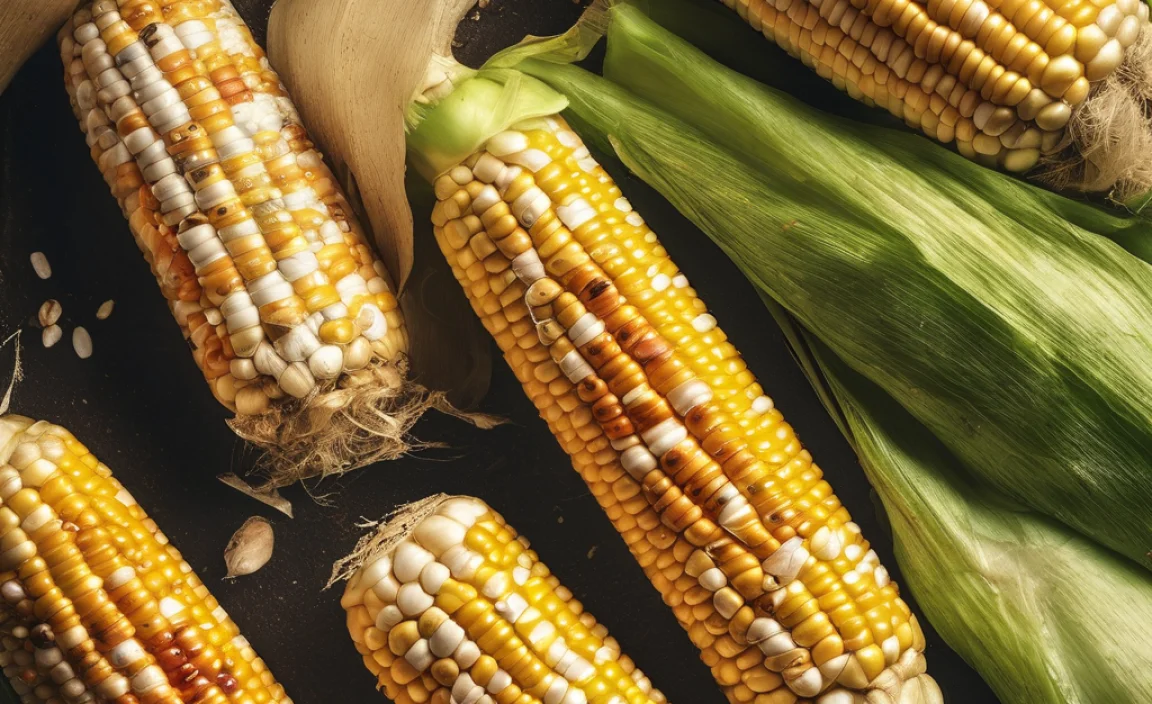
You don’t need a lot of fancy equipment, but a few tools can make the job much easier and more efficient.
- For Breaking Cobs:
- Sturdy Knife & Cutting Board: Good for smaller batches.
- Loppers or Pruning Shears: Great for cutting cobs into shorter lengths.
- Small Axe or Hatchet: Use with extreme caution and a stable chopping block for larger quantities.
- Chainsaw/Wood Chipper (for large-scale): If you have a serious garden and a lot of cobs, these can be game-changers, but they require safety precautions and space.
- For Managing the Compost Pile:
- Compost Fork or Aerator: Essential for turning and aerating your pile.
- Shovel: Useful for moving compost around.
- Watering Can or Hose with a Gentle Nozzle: To add moisture when needed.
- Gloves: To keep your hands clean and protected.
For beginners, a good pair of loppers and a compost fork are usually sufficient to get started with composting corn cobs effectively.
How Long Does It Take for Corn Cobs to Compost?
This is where patience comes in! Because of their tough, woody structure, corn cobs take longer to break down than softer kitchen scraps. In a well-managed hot composting system, you might see them significantly broken down within 2-4 months. In a slower, cooler compost pile or a less actively managed bin, it could take 6-12 months, or even longer. Chopping them into small pieces is the absolute best way to ensure they don’t become a stubborn, undecomposed lump in your finished compost. The key factors influencing decomposition time are:
- Size of the pieces: Smaller pieces decompose faster.
- Balance of green and brown materials: A good nitrogen source helps microbes break down the carbon in the cobs.
- Moisture levels: Consistent dampness is crucial.
- Aeration (turning): Oxygen is vital for microbial activity.
- Temperature of the pile: Hot composting speeds things up significantly.
Think of it as an investment. Adding them now means richer soil later!
Composting Corn Cobs: Batch vs. Continuous Pile
The type of compost bin you use can influence how corn cobs break down. A batch composting system works like a recipe: you add all your ingredients at once, let it cook (heat up), cure, and then it’s ready. In a batch system, if you add a lot of corn cobs at the start, they’ll decompose along with everything else. A continuous composting system is one where you add materials to the top and harvest finished compost from the bottom. In this case, your corn cobs will take longer to reach the bottom where the finished compost resides, meaning they might not be fully broken down by the time you harvest. For continuous systems, smaller, well-shredded cobs mixed well are best, or accept that they might be among the last bits to decompose.
Can You Compost Corn Cobs if They Have Butter or Seasoning?
This is a common question after a barbecue! Yes, you can generally compost corn cobs with small amounts of butter, salt, or mild seasonings. The key here is “small amounts.” If you’ve slathered them in oily sauces or heavy spices, it’s best to wash them off before composting. Large amounts of oil can create anaerobic conditions (lack of oxygen) and attract pests. Mild seasonings are usually fine; the microbes will handle them. However, if the cobs are covered in fatty meat drippings or very greasy, it’s better to err on the side of caution and avoid adding them to your compost, as grease can disrupt the composting process and attract unwanted visitors. Think about what happens to your compost pile when you add it – a little bit of seasoning is unlikely to cause a problem, but a whole lot of it might.
What NOT to Compost Alongside Corn Cobs
While corn cobs themselves are perfectly fine for composting (when prepped!), there are certain things you should avoid adding to your compost bin, regardless of what else is in there. These can cause problems, attract pests, or introduce harmful pathogens.
Avoid these universally:
- Meat, bones, and dairy products: These can attract pests like rodents and raccoons, and can also lead to foul odors. Some advanced composters can handle these, but it’s best to avoid them when starting out.
- Diseased plants: If your plants had a serious disease, composting them without reaching very high temperatures can spread the disease back into your garden.
- Weeds that have gone to seed: Similarly, weed seeds can survive the composting process and sprout in your garden.
- Human or pet waste: Unless you have a specialized system for composting humanure or manure from carnivores, it poses a health risk.
- Chemically treated wood or yard waste: Pesticides, herbicides, or oil-based treatments can contaminate your compost.
- Glossy or coated paper/cardboard: The coatings don’t break down well.
When in doubt, leave it out! It’s better to be safe than sorry when dealing with your compost.
Can Dried Corn Cobs Be Composted?
Absolutely! Dried corn cobs are actually even easier to break down than fresh ones, as they have less moisture. The only difference is that they might be more brittle, making them easier to snap or chop. They still fall into the “brown” category and require the same preparation: breaking them into smaller pieces to increase surface area for decomposition. So, if you have corn cobs left over from crafts or decorations, they can definitely go into the compost bin!
The Role of Corn Cobs in Different Compost Systems
Your compost setup influences how well corn cobs integrate. Here’s a quick look:
| Compost System | How Corn Cobs Fit In | Beginner Tips |
|---|---|---|
| Hot Composting Tumbler | Excellent. The tumbling action and heat help break down tough materials like cobs quickly if chopped fine and balanced with greens. Aeration is excellent. | Chop cobs very small (inch or less). Ensure a good mix of greens and browns. Keep moisture levels balanced. Tumbling daily or every other day is ideal. |
| Open Bin (Hot Pile) | Good, but requires active management. Chopping cobs is essential. Regular turning helps the pile heat up and break them down faster. | Chop cobs into 2-3 inch pieces or smaller. Turn the pile at least weekly. Monitor moisture. Aim for a good mix of materials. |
| Worm Composting (Vermicomposting) | Use with caution! Worms don’t readily consume whole cobs. Chopped cobs can be added in small quantities. They might take a while to break down. | Cut cobs into very small pieces (quarter-inch or less). Add only a few at a time, mixed with other bedding materials. Don’t overload the bin. |
| Cold Composting (Passive Pile) | Slow. Cobs will eventually break down, but it will take a long time (6-18 months or more). Chop them to speed up the process. | Chop cobs into 2-3 inch pieces. Expect them to be among the last materials to fully decompose. This method is more about patience and less about fast turnaround. |
For beginners, open bins or tumblers are generally more forgiving. Worm composting with cobs requires more attention to detail.
Are There Any Benefits to Composted Corn Cob Material?
Once corn cobs have fully broken down, the resulting compost is incredibly beneficial for your garden. The tough cellulose and lignin they contain, once decomposed, contribute significantly to improving soil structure. This means:
- Better Soil Aggregation: The compost helps bind soil particles together, creating a more crumbly, well-aerated soil that plant roots can easily penetrate.
- Improved Water Retention: Compost acts like a sponge, holding moisture in the soil. This is especially valuable during dry spells, reducing the need for frequent watering.
- Nutrient Release: As the organic matter breaks down further in the soil, it releases essential nutrients that plants can absorb, acting as a slow-release fertilizer.
- Habitat for Beneficial Microbes: Compost teems with life! These microorganisms help break down organic matter, cycle nutrients, and can even help suppress plant diseases.
- pH Buffering: Organic matter helps to stabilize soil pH, making it more suitable for a wider range of plants.
So, those hard-to-break-down cobs transform into something that makes your soil healthier, more resilient, and more productive.
Troubleshooting Common Corn Cob Composting Issues
Even with the best intentions, you might run into a snag. Here are a few common problems and how to fix them:
- Issue: Corn cobs aren’t breaking down.
- Solution: Did you chop them small enough? This is the MOST common reason. Ensure pieces are 2-3 inches or less. Are you turning the pile regularly? More aeration speeds things up. Is the pile too dry? Add water. Is the pile too wet? Add more browns (like more chopped corn cobs or dry leaves) and turn it.
- Issue: Compost smells bad (like ammonia or rotten eggs).
- Solution: This usually means too much nitrogen (too wet, too many “greens”) or not enough air. Add more carbon-rich “browns” like chopped corn cobs, shredded paper, or dry leaves. Turn the pile thoroughly to introduce air.
- Issue: Compost is too dry and dusty.
- Solution: Add water! The material should feel like a damp sponge. If it’s very dry, it’s hard for the microbes to work. Add greens (like kitchen scraps) and enough water to get it moist, then turn.
- Issue: Pests (flies, maggots, rodents) are attracted.
- Solution: Ensure you’re not adding meat, dairy, or greasy food scraps. Bury kitchen scraps deep within the pile, ideally surrounded by browns like your chopped cobs. Make sure your bin has a lid if pests are a significant problem. Chopped corn cobs themselves are unlikely to attract pests if they are just fibrous plant material.
Most composting issues arise from imbalances in the green/brown ratio, moisture, or aeration. By
.lwrp.link-whisper-related-posts{
margin-top: 40px;
margin-bottom: 30px;
}
.lwrp .lwrp-title{
}.lwrp .lwrp-description{
}
.lwrp .lwrp-list-container{
}
.lwrp .lwrp-list-multi-container{
display: flex;
}
.lwrp .lwrp-list-double{
width: 48%;
}
.lwrp .lwrp-list-triple{
width: 32%;
}
.lwrp .lwrp-list-row-container{
display: flex;
justify-content: space-between;
}
.lwrp .lwrp-list-row-container .lwrp-list-item{
width: calc(25% – 20px);
}
.lwrp .lwrp-list-item:not(.lwrp-no-posts-message-item){
max-width: 150px;
}
.lwrp .lwrp-list-item img{
max-width: 100%;
height: auto;
object-fit: cover;
aspect-ratio: 1 / 1;
}
.lwrp .lwrp-list-item.lwrp-empty-list-item{
background: initial !important;
}
.lwrp .lwrp-list-item .lwrp-list-link .lwrp-list-link-title-text,
.lwrp .lwrp-list-item .lwrp-list-no-posts-message{
}@media screen and (max-width: 480px) {
.lwrp.link-whisper-related-posts{
}
.lwrp .lwrp-title{
}.lwrp .lwrp-description{
}
.lwrp .lwrp-list-multi-container{
flex-direction: column;
}
.lwrp .lwrp-list-multi-container ul.lwrp-list{
margin-top: 0px;
margin-bottom: 0px;
padding-top: 0px;
padding-bottom: 0px;
}
.lwrp .lwrp-list-double,
.lwrp .lwrp-list-triple{
width: 100%;
}
.lwrp .lwrp-list-row-container{
justify-content: initial;
flex-direction: column;
}
.lwrp .lwrp-list-row-container .lwrp-list-item{
width: 100%;
}
.lwrp .lwrp-list-item:not(.lwrp-no-posts-message-item){
max-width: initial;
}
.lwrp .lwrp-list-item .lwrp-list-link .lwrp-list-link-title-text,
.lwrp .lwrp-list-item .lwrp-list-no-posts-message{
};
}

I am passionate about home engineering. I specialize in designing, installing, and maintaining heating, ventilation, and air conditioning systems. My goal is to help people stay comfortable in their homes all year long.

